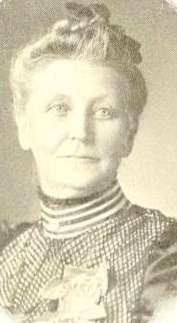Delia Bartlett Fay
Delia Bartlett Fay (August 29, 1840 – May 27, 1908) was a Union nurse during the American Civil War. She later served as president of the National Association of Army Nurses of the Civil War.
Delia Bartlett Fay | |
|---|---|
 | |
| Born | August 29, 1840 New York |
| Died | May 29, 1908 Jay, New York |
| Other names | Delia A. B. Fay |
Civil War service
Fay's husband Artemus William "Willie" Fay enlisted in the 118th regiment New York State Volunteers in Company C, and Fay joined him in service.[1] Fay and her husband were first stationed at Fort Ethan Allen near Washington, D.C. to protect the capital. They remained here until 1863.[1] Afterwards, the regiment moved to Suffolk, Virginia for their first actions. Fay was present at these actions, which included a siege lasting for multiple days. Fay, however, was fearless under rebel fire. The regiment next moved to Yorktown, where Fay continued her nursing duties.[1]
Fay built a rapport with the soldiers of the regiment. During marches, Fay shared much of the experience with soldiers, including carrying her own supplies as well the supplies of injured regiment members.[1][2] Fay also acted as a scout at one point, to locate Confederate forces. Fay would also, in her work, listen to the stories of African American citizens, only furthering her reputation for kindness.[1]
Later years
After the war, Fay served as president of the National Association of Army Nurses of the Civil War.[3] She was widowed when Willie Fay died in 1907, and she died in 1908, in New York, aged 67 years.[4]
References
- Holland, Mary Gardner (1897). Our Army Nurses : Interesting sketches and photographs of over one hundred of the noble women who served in hospitals and on battlefields during our late Civil War, 1861-65. Boston : Lounsbery, Nichols & Worth. pp. 476-480.
- Hall, Richard H. (2006). Women on the Civil War Battlefront. Lawrence: University Press of Kansas. p. 235. ISBN 9780700614370.
- Corps, Woman's Relief (1 January 1904). "Journal of the ... National Convention". National Tribune Company – via Google Books.
- "Army Nurses". The National Tribune. July 30, 1908. p. 8. Retrieved September 4, 2019 – via Newspapers.com.